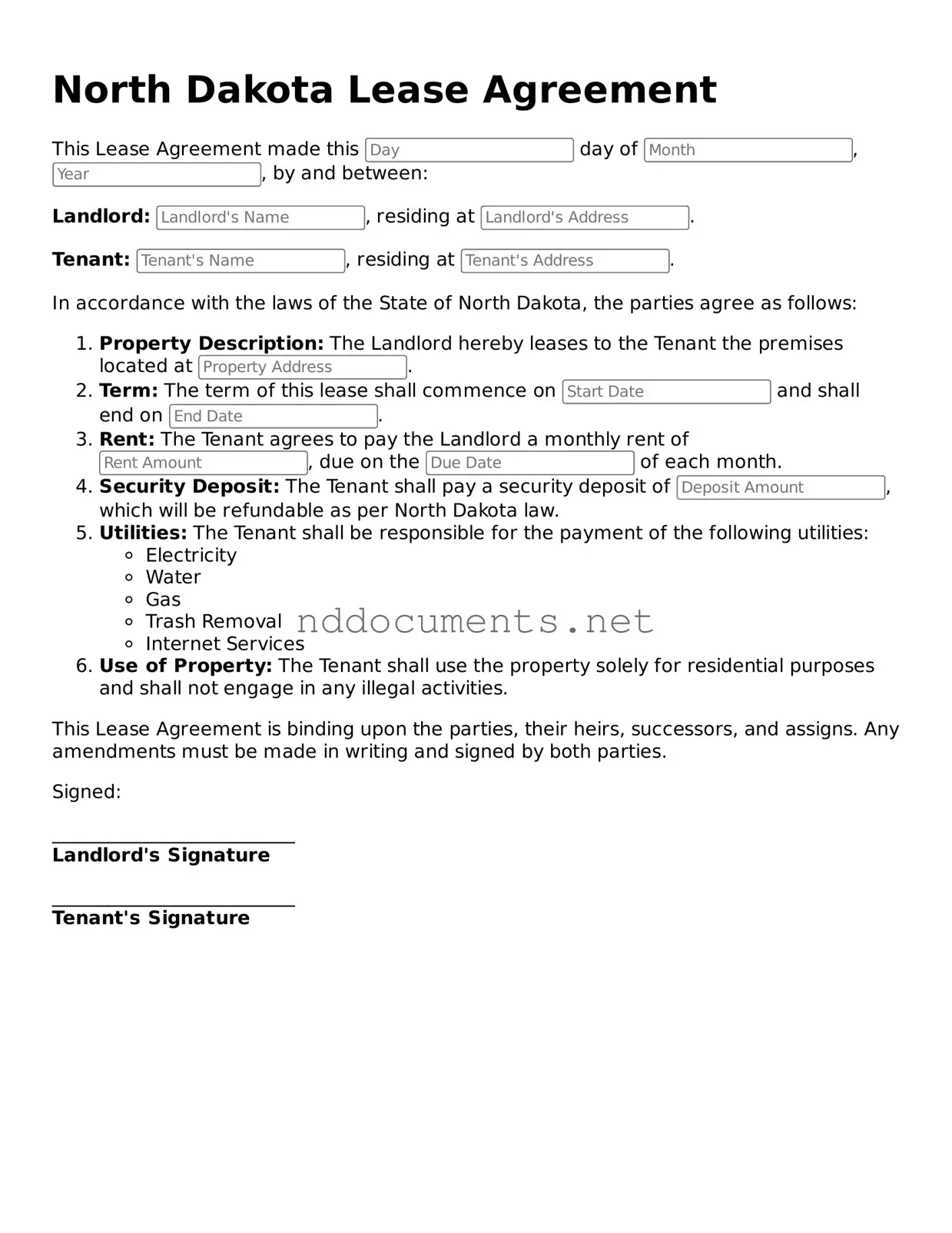Fillable Lease Agreement Document for North Dakota
The North Dakota Lease Agreement form is a legal document that outlines the terms and conditions under which one party (the lessor) grants another party (the lessee) the right to use a property for a specified period. This form serves to protect the rights of both parties and ensures clarity in the rental arrangement. Understanding its components is essential for anyone involved in leasing property in North Dakota.
Make Your Document Online
